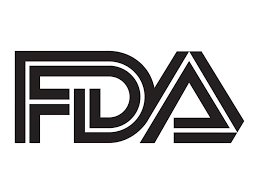Article
FreeStyle Libre Sensors Cleared for Integration with Automated Insulin Delivery Systems
Author(s):
The US FDA has granted clearance to the FreeStyle Libre 2 and FreeStyle Libre 3 sensors for integration with automated insulin delivery systems. Abbott, which noted ongoing collaborations with Insulet and Tandem, expects the modified sensors to be available in the US later this year.

The US Food and Drug Administration has cleared the Abbott FreeStyle Libre 2 and FreeStyle Libre 3 integrated continuous glucose monitoring (CGM) sensors for integration with automated insulin delivery (AID) systems.1
Announced by Abbott on March 6, clearance for the sensors, which are cleared for use in people at least 2 years of age, represents a major step forward for patient choice in diabetes technology.1
"Our goal is to make diabetes care as easy as possible," said Jared Watkin, senior vice president for Abbott’s diabetes care business.1 "The FreeStyle Libre portfolio is already the most prescribed CGM in the United States and, with the integration of automated insulin delivery systems, people in the US will soon have an affordable option to pair with insulin pumps. This means less time thinking about diabetes and more time living."
When approved in May 2022, the FreeStyle Libre 3 was billed as the world’s thinnest, small, and most accurate 14-day glucose sensor.2 Priced the same as the previous iteration of FreeStyle Libre sensors2, the clearance came nearly 2 years after the FreeStyle Libre 2 received approval.3
In their March 6, 2023 release, Abbott noted US availability of the modified FreeStyle Libre 2 and FreeStyle Libre 3 sensors will begin later this year, with the expectation that these modified sensors will, over time, replace the FreeStyle Libre 2 and FreeStyle Libre 3 sensors available today. Abbott also pointed out it intention to partner with pump manufacturers to increase uptake of integration as soon as possible, but the company highlighted current partnerships with Insulet and Tandem for future integrations in multiple countries, including the US.1
With clearance, the modified sensors have also been cleared for use by children as young as 2 years old and for wear time up to 15 days. Additionally, the clearance allows for FreeStyle Libre 2 and FreeStyle Libre 3 sensors, both those available today and the modified sensors available in the future, to be used by women with all types of diabetes who are pregnant.1
References:
- U.S. FDA Clears Abbott's Freestyle Libre® 2 and Freestyle Libre® 3 sensors for integration with automated insulin delivery systems. Abbott MediaRoom. https://abbott.mediaroom.com/2023-03-06-U-S-FDA-Clears-Abbotts-FreeStyle-Libre-R-2-and-FreeStyle-Libre-R-3-Sensors-for-Integration-with-Automated-Insulin-Delivery-Systems. Accessed March 6, 2023.
- Abbott's Freestyle Libre® 3 receives U.S. FDA clearance - features world's smallest, thinnest and most accurate 14-day glucose sensor. Abbott MediaRoom. https://abbott.mediaroom.com/2022-05-31-Abbotts-FreeStyle-Libre-R-3-Receives-U-S-FDA-Clearance-Features-Worlds-Smallest,-Thinnest-and-Most-Accurate-14-Day-Glucose-Sensor. Accessed March 6, 2023.
- Abbott's Freestyle® Libre 2 ICGM cleared in U.S. for adults and children with diabetes, achieving highest level of accuracy and performance standards. Abbott MediaRoom. https://abbott.mediaroom.com/2020-06-15-Abbotts-FreeStyle-R-Libre-2-iCGM-Cleared-in-U-S-for-Adults-and-Children-with-Diabetes-Achieving-Highest-Level-of-Accuracy-and-Performance-Standards. Accessed March 6, 2023.





